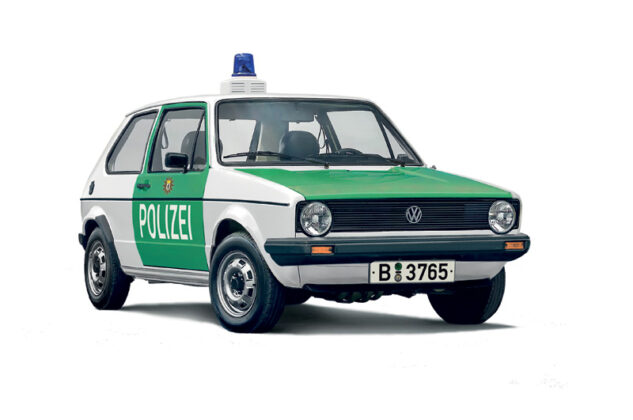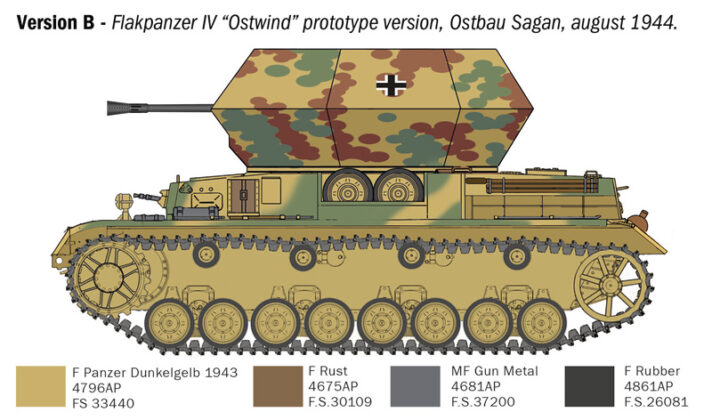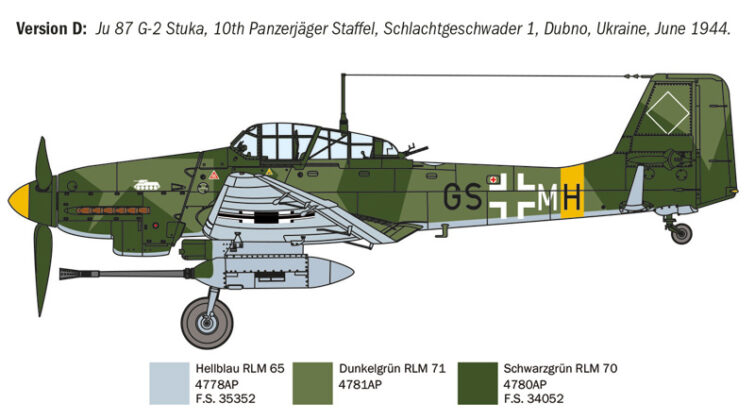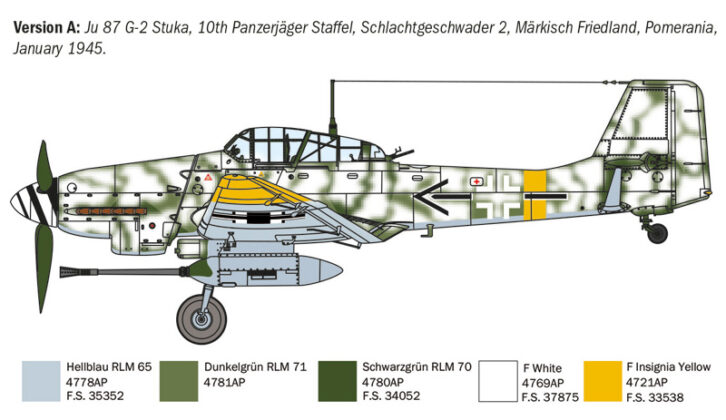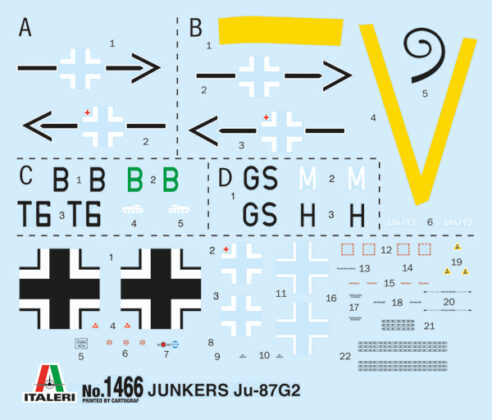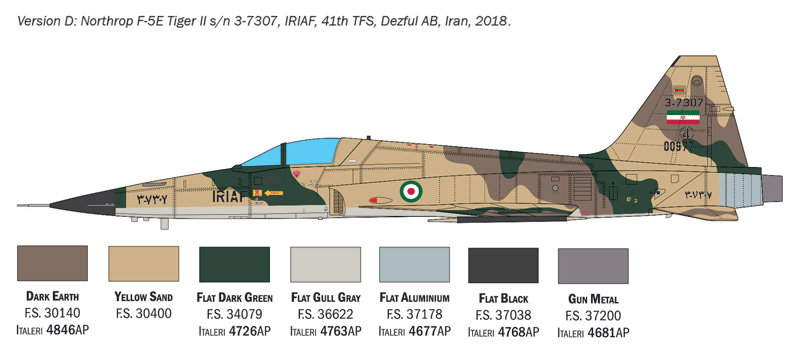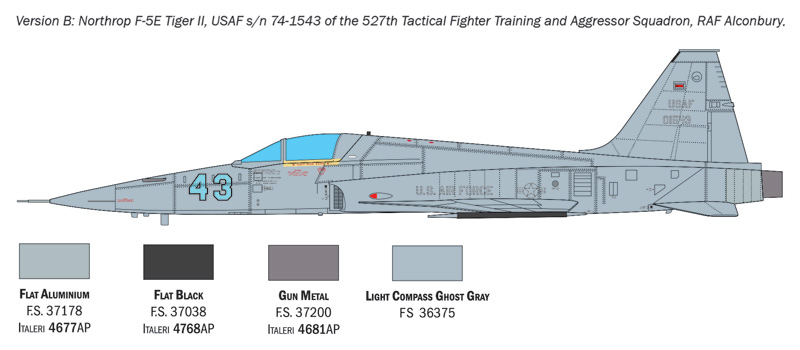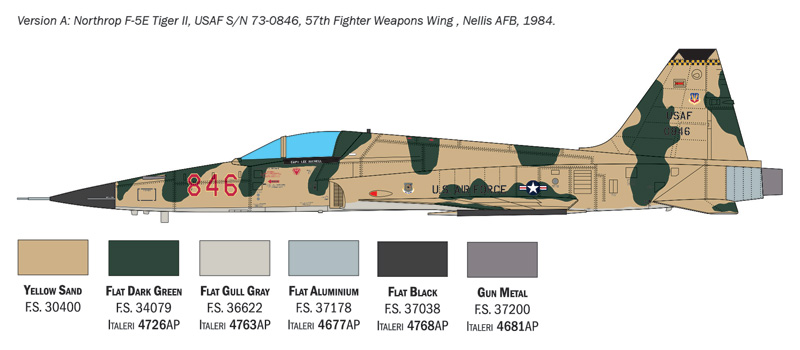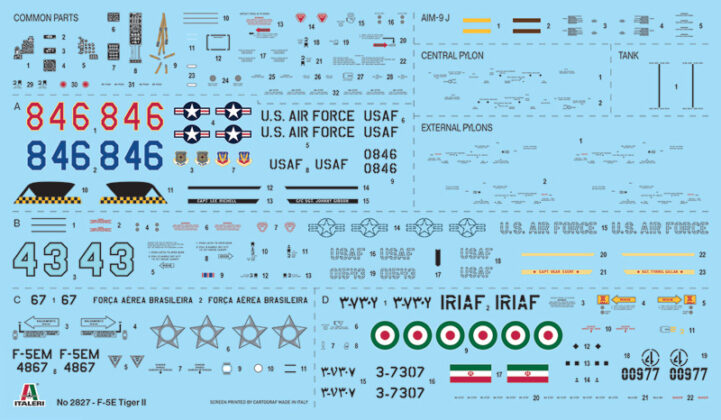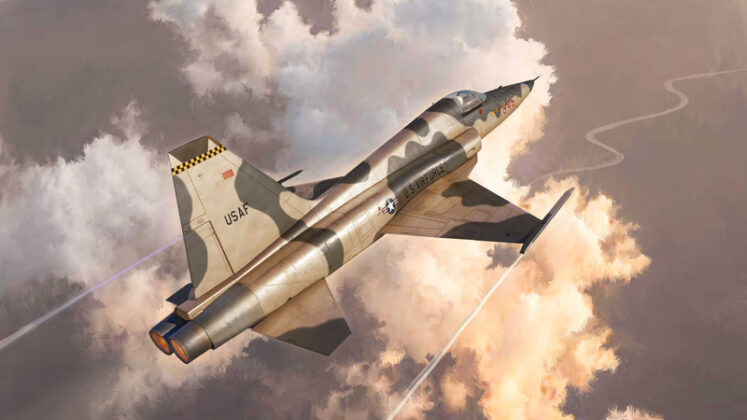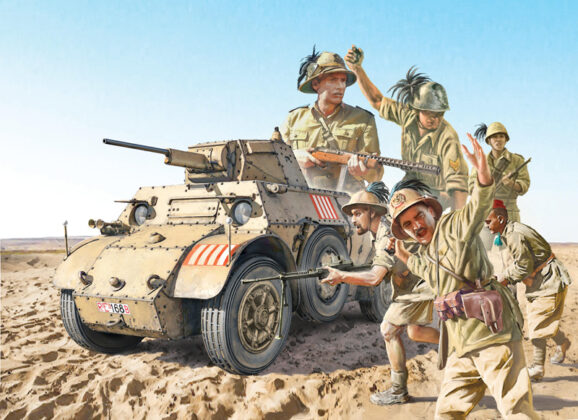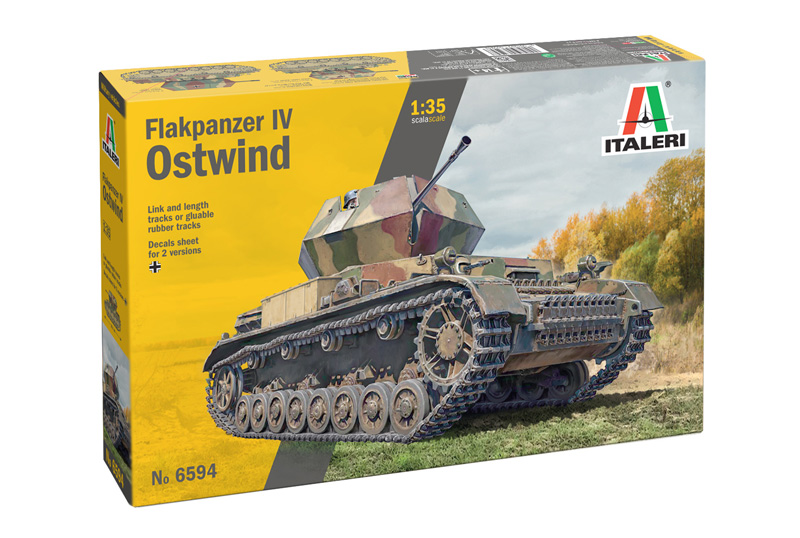 1/35 Flakpanzer IV Ostwind
1/35 Flakpanzer IV Ostwind
LINK-AND-LENGTH TRACKS OR GLUABLE RUBBER TRACKS – DECALS FOR 2 VERSIONS – COLORS INSTRUCTION SHEET
During the war, the need to produce self-propelled anti-aircraft guns capable of protecting troops against low-flying air attacks became marked. To this end, the hull of the Panzer IV medium tank, the Flakpanzer IV Wirbelwind, was used as a platform to add on a 20 mm Flak 38 quadruple gun system. By the end of 1944 the Wirbelwind was joined by the more powerful Ostwind, which was mounted with a 37 mm Flak 43 anti-aircraft gun. Providing a greater range of fire, the anti-aircraft armament protected by a thick and characteristic shield mounted on an “open-roof” hexagonal turret, the Ostwind could also be effectively deployed against ground targets in close support of troops on the battlefield. The few “Ostwind” that were produced were delivered to the anti-aircraft units of the Panzer Division, and proved very effective on operations.
 1/24 VW Golf Polizei
1/24 VW Golf Polizei
RUBBER TYRES – COLORS INSTRUCTION SHEET
The Volkswagen Golf is an iconic vehicle designed and produced by the Wolfsburg car manufacturer. It was first introduced in Spring 1974 and immediately became a highly successful commercial product. The first series (1974-1983), offered leading edge technical capabilities to a very receptive consumer market of that period, including a water-cooled front engine, front-wheel drive, solid and robust bodywork with a functional but equally attractive design. The high quality to price ratio was the real “competitive edge” that made the Golf so successful however. At the Frankfurt Motor Show in 1975, the sporty version Golf GTI was introduced which incorporated the high performance 110 HP 1,600 cc engine. The following year saw the mass production of the Golf GTI and in just two months it achieved notable commercial successes in many European and non-European countries. The version used by the German Police during the 1970s and early 1980s was symbolic of everyday life during that period.
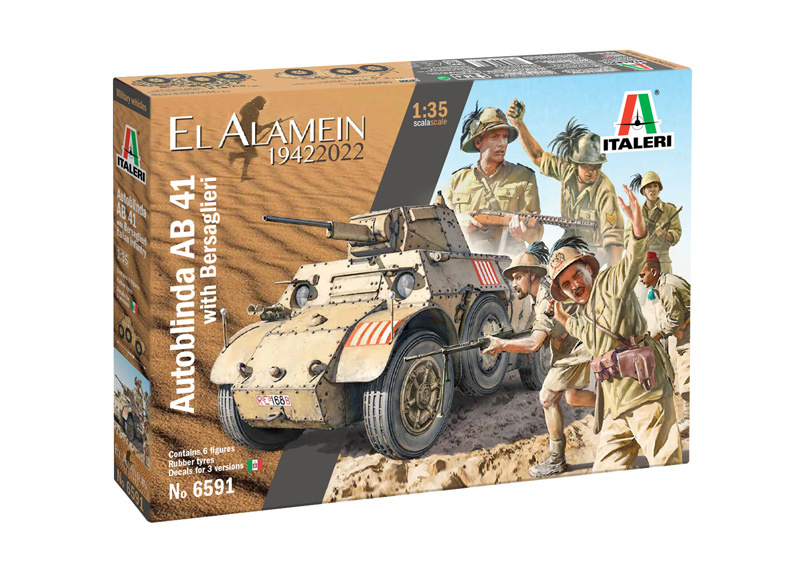 1/35 Autoblinda AB 41 with Bersaglieri El Alamein
1/35 Autoblinda AB 41 with Bersaglieri El Alamein
CONTAINS 6 FIGURES – RUBBER TYRES – DECALS FOR 3 VERSIONS – COLOR INSTRUCTION SHEET
The AB series of armored cars were developed by Fiat-Ansaldo and used by the reconnaissance units of the Italian “Regio Esercito”. Following the introduction of the first version, the AB-40, the AB-41 was built which featured a more powerful engine and was armed with the 20 mm Breda 20/65 gun. Additionally, its 8 mm Breda Mod. 38 coaxial machine gun was fitted into the turret. From a technical perspective the AB 41 armored car was four-wheel drive with two driving seats, one front and one rear. Its speed of 70 km / h and its reliability both on and off-road, made it valued by crews during routine and also advanced reconnaissance missions. Vehicle protection was afforded by riveted plate armor. The AB-41 was deployed extensively by the Regio Esercito on the North African front, and indeed on all the main fronts of the Second World War, it was also used post 1943 by both Italian and German units.
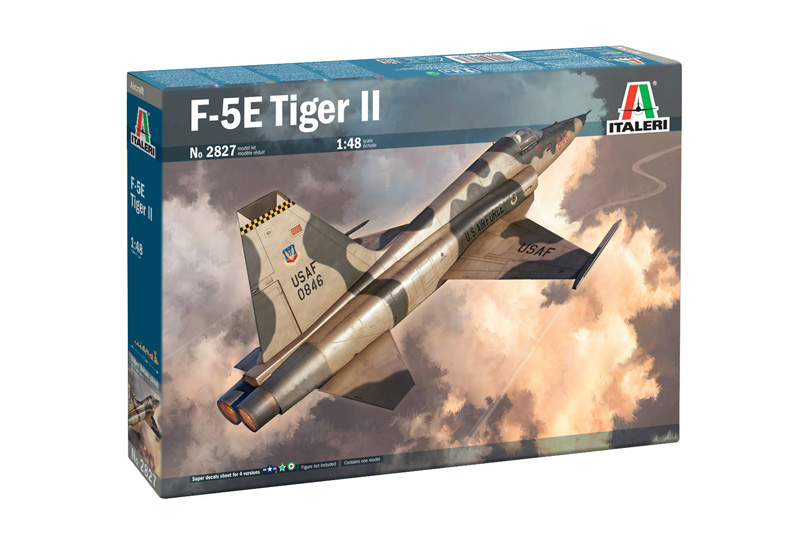 1/48 F-5E Tiger II
1/48 F-5E Tiger II
SUPER DECALS SHEET FOR 4 VERSIONS – COLOR INSTRUCTION SHEET
FIGURE NOT INCLUDED – CONTAINS 1 MODEL
The Northrop F-5 was developed during the 1960s to meet the requirements of a number of NATO countries that needed a simple, cheap and easy to maintain multi-role fighter. Its airframe inspired the subsequent introduction of the F-5E Tiger II in the early 1970s. Equipped with two new J85-GE-21 jet engines capable of providing much higher power and thrust than the previous version, it was characterized by a longer and enlarged fuselage. The improved flight performance arising from the new aerodynamic lay-out, the greater operational range and the updated avionics, allowed the Tiger II to be used successfully by numerous air forces. The basic armaments were two 20 mm cannons installed in the nose under the cabin, supported by the capability to deploy a wide set of air-to-air missiles. In addition to its primary fighter role it still however retained extensive ground attack capabilities.
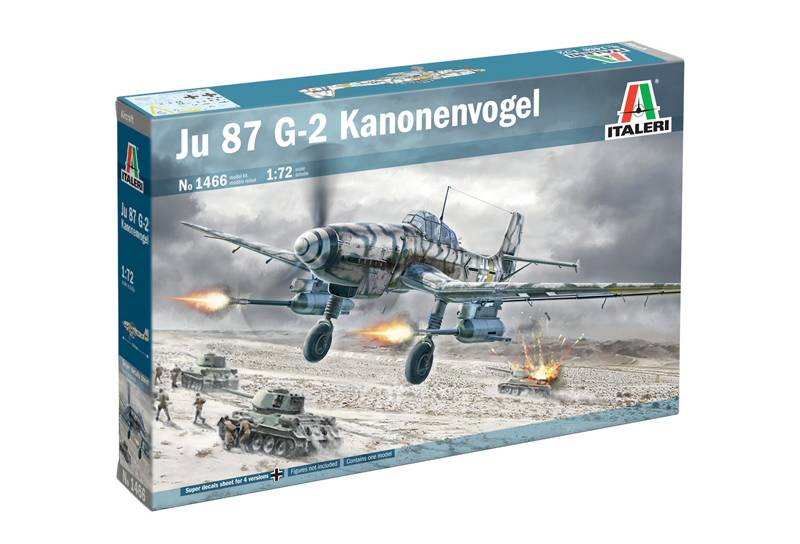 1/48 Ju 87 G-2 Kanonenvogel
1/48 Ju 87 G-2 Kanonenvogel
SUPER DECALS SHEET FOR 4 VERSIONS – COLOR INSTRUCTION SHEET
FIGURE NOT INCLUDED – CONTAINS 1 MODEL
The JU-87 dive bomber is certainly one of the best known aircraft of WW2. The characteristic “gull wing” aircraft gained great notoriety at the beginning of the war, and is considered, together with the Panzer Divisions of the Wehrmacht, as defining symbols of the Blitzkrieg. During the war, new versions with differing operational profiles were introduced. The Ju-87G was developed as an “anti-tank” version of the Stuka, to counter the vast array of enemy armored vehicles deployed on the eastern front post 1943.The Stuka “ace” Hans Ulrich Rudel proposed the addition of two 37 mm Flak 18 cannons housed in underwing pods to better counter this developing threat. With this configuration the Ju-87G “Kanonenvogel” proved extremely effective in the hands of experienced pilots. Even more refined was the G-2 version which was characterized by greater wing surfaces, in turn derived from the previous D-5 version.
HobbyLink International
Hoblylink International Shop
eBay Store




